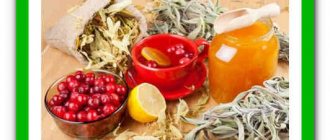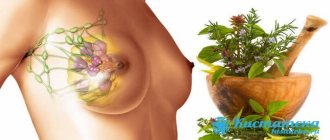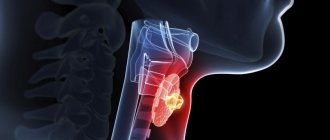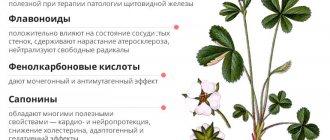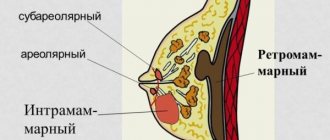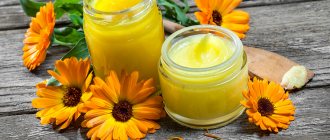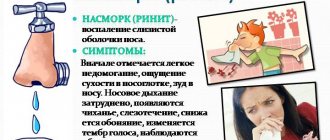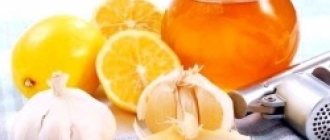The photo shows the thyroid gland in AIT.
The disease is classified as autoimmune. Drug treatment is not always amenable to treatment. Characterized by an inflammatory process in the endocrine organ. As a result, the thyroid gland stops producing the required amount of hormones.
Treatment of autoimmune thyroiditis with folk remedies helps to cope with the disease when traditional methods are powerless.
The use of coconut oil in the treatment of endocrinology
Coconut oil is sold in specialized grocery stores.
The use of coconut oil in food helps to cope with the inflammatory process in the thyroid gland. The price of the food product is not high. Many patients will be able to purchase the oil and use it for food.
The product contains lauric acid. During metabolism, the human body will convert it into monolaurin, which will fight viruses and bacteria that cause inflammation.
Oil for external use thickens even at room temperature. Before applying to the skin, it needs to be warmed up a little.
Important! By replacing sunflower, corn, and soybean oil with coconut oil, patients with autoimmune thyroiditis will cope with the disease faster. Normalizes the production of hormones by the thyroid gland.
Causes of the disease
The main reason for the development of this disease is disruption of the immune system. With these disorders, the immune system ceases to distinguish which cells and tissues in the thyroid gland are foreign, and begins to fight and destroy the entire organ as a whole.
A disturbance in the structure of the thyroid gland can lead to a lack of hormones in it (hypothyroidism), as well as to complete atrophy of the organ.
It should be noted that in women the risk of developing the disease is 10 times higher than in men, since their endocrine system works much more actively. Therefore, their thyroid gland reacts much faster to various loads and emotional stress.
Autoimmune thyroiditis can be triggered by one or more factors, such as:
- various stresses, fatigue, emotional stress;
- hormonal therapy, which is used in the treatment of certain gynecological diseases;
- increased consumption of medicinal iodine;
- increased consumption of antiviral drugs;
- hereditary predisposition;
- radiation exposure;
- bad ecology.
Milk thistle tea drink for the treatment of autoimmune thyroiditis
Everyone knows what the plant looks like, but few people know its beneficial properties in the treatment of thyroid diseases.
The drink is prepared from dried milk thistle flower, which contains more than 170 components that help cope with inflammation in endocrinology.
A ready-made mixture sold in a pharmacy for the preparation of a medicinal drink.
Method for making a medicinal drink
You can add sugar or honey to the prepared milk thistle drink to taste.
Treatment of thyroiditis of the thyroid gland with folk remedies helps to normalize the production of hormones by the organ and relieve the inflammatory process from the thyroid gland. You can achieve results from drinking milk thistle tea only if the drink is prepared correctly. 40 grams of ground dried flower are poured with 600 milliliters of hot water.
Place on fire and boil for 15 minutes. Then filter and cool. You need to let the drink brew for 2 hours. After time, milk thistle tea can be consumed warm.
For medicinal purposes, the drink is taken at a dose of 250 milliliters per day. For prevention purposes, the same dosage is 1 – 2 times a week. One preparation is designed for 2 servings. When preventing autoimmune thyroiditis, each weekly portion is prepared fresh.
Clinic of subacute thyroiditis
Women suffer from subacute thyroiditis 5 times more often than men. The cause of its occurrence is considered to be viral damage to the cells of the thyroid gland by pathogens of various infections (adenoviruses, measles, influenza, mumps viruses).
Hashimoto's thyroiditis usually occurs 2-6 weeks after a viral infection of the upper respiratory tract. The disease is based on inflammation of the thyroid gland: after the destruction of cells that synthesize hormones, a large amount of the latter (thyroxine and triiodothyronine) enters the blood.
All this leads to the development of hyperthyroidism (a condition caused by a large amount of thyroid hormones in the blood).
When the reserves of thyroid hormones are depleted, a phase of euthyroidism begins (a normal amount of hormones in the blood), followed by temporary hypothyroidism, followed by complete restoration of thyroid function and recovery.
The disease begins with a moderate increase in temperature, pain in the thyroid gland, which can radiate to the ear, lower jaw, and back of the head. Symptoms of hyperthyroidism are observed within 1-2 months:
- irritability;
- tearfulness;
- increased fatigue;
- cardiopalmus;
- hot flashes;
- sweating;
- shiver;
- tremor;
- weight loss.
Subsequently, health improves, although pain in the thyroid gland persists. After a few more weeks, the hypothyroidism phase begins, during which a person may feel weakness, drowsiness, chilliness, and decreased performance. However, the thyroid gland quickly compensates for the lack of hormones.
Diagnosing Hashimoto's thyroiditis is not difficult. For this purpose, ultrasound and scintigraphy of the thyroid gland, hormone studies, general and biochemical blood tests are used.
Use of cocklebur for autoimmune thyroiditis
Prickly and very useful. All components of this plant, including the root system, have a healing effect in endocrinology.
The plant has a beneficial effect on thyroid diseases. Treatment of AIT with folk remedies using cocklebur helps patients restore hormonal levels and prevent the development of complications in endocrinology.
Preparation of tincture from dry cocklebur plant
The process of preparing cocklebur tincture.
To make a medicinal decoction, you can collect the plant with your own hands and dry it yourself. Dry cocklebur is sold in pharmacies in crushed form; for ease of use, you can use it.
To prepare the decoction, you will need an enamel pan, into which 25 grams of dried and crushed plant and 500 milliliters of boiling water are added. The container is put on fire.
After boiling, the broth should be left on an open fire for no more than 7 minutes. After the time has passed, remove the pan from the stove, cool to room temperature and filter the resulting solution from the plant through a fine sieve or gauze folded in several layers.
One preparation yields about 420 milliliters of decoction (including boiling), which is recommended to be drunk in 2 doses within 24 hours. When treating autoimmune thyroiditis, patients are prescribed to take the drug every other day. For preventive purposes, it is enough to take the decoction once every 7 days.
Folk remedies
Hormonal drugs, which are often prescribed for the treatment of autoimmune thyroiditis, have a bad effect on the functioning of the entire body, in particular the liver, kidneys and heart. This is why many people prefer effective folk remedies.
Herbs
Herbs are an excellent remedy in the treatment of thyroiditis. Traditional medicine advises turning to plants such as hawthorn, kelp, celandine, cinquefoil, and licorice.
The more herbs there are in the herbal collection, the better. You should be “creative” in choosing herbs for treatment, and experiment with different plants.
For example, you can add plantain, chamomile, raspberry and blackberry leaves to the above-mentioned plants. All herbs must be used to make tinctures.
Oil hoods
Treatment of this disease can be effective with the help of oil bases, therefore oil extracts are a necessary component in the treatment with folk remedies.
To make such a product you need to take celandine, string, cocklebur, kirkazon and sweet clover. Next, you should chop the plants and fill them with some medicinal oil, preferably odorless.
The mixture must be infused in a glass container, for example, in a jar, for 4 weeks. Apply the product to the neck area before going to bed.
Juice therapy
Juice therapy is an extremely effective folk remedy. As mentioned above, in cases where the functioning of the immune system is disrupted, the body begins to fight its own cells, and therefore destroy itself.
Antioxidants, which are found in abundance in various juices, can help with autoimmune disorders. This is an extremely healthy and tasty way to recover from thyroiditis.
For effective treatment, you need to drink juices from beets and carrots, which, by the way, should be three times more than beets. In order for the juice to be better absorbed, it is recommended to add some medicinal oil to it, for example, flaxseed.
You can also make juices from cabbage, as well as from lemon.
Compresses and rinses
Compresses should be made from herbs such as, say, nettle, calendula, St. John's wort and celandine. A warm compress should be applied to the neck in the area where the thyroid gland is located and kept for about two hours.
If you decide to rinse, then the same herbal infusions mentioned above will come to the rescue. To be effective, the procedure must be performed regularly.
The use of feijoa and walnut partitions for aitis
Feijoa is useful for the thyroid gland and other organs and systems in the human body.
Treatment of autoimmune thyroiditis with folk remedies consists of normalizing the production of hormones by the endocrine organ. To achieve effectiveness, experts recommend consuming feijoa.
In southern countries, this fruit ripens in the fall, during the period of exacerbation of thyroid diseases. It contains a large amount of iodine, which is necessary for complete recovery.
How to cook and consume feijoa for endocrinology
The resulting natural jam can be stored in the refrigerator for no more than 4 days.
In terms of taste, the fruit is quite pleasant to the taste. It can be ground in a meat grinder and mixed with sugar, fructose or flower honey. It is recommended to consume the resulting mixture 25 grams 2 times a day.
Patients with severe changes in T3 and T4 indicators need to be treated with feijoa for 15 days, then take a break for 10 days and continue treatment again. Then donate blood for analysis.
Note! Jam cannot be cooked and can ferment if it comes into contact with sugar. It is necessary to prepare jam in small quantities for several uses.
Patients with minor deviations in hormone levels are prescribed to take feijoa for 7 days and with a break of 10 days. People take the same dosage for preventive purposes.
Important! In winter, when there are no fresh fruits on trees and markets, you can use dry feijoas. If the patient has chronic autoimmune thyroiditis, treatment with folk remedies using the fruit is carried out in the form of an alcohol tincture. It is consumed 25 milliliters once a day.
Feijoa fruit tincture can be mixed with tincture of dry walnut partitions. It is recommended for patients with progression of aitis to take the drug 20 milliliters 2 times a day, diluting with water at room temperature.
The benefits of using walnut partitions in endocrinology are widely known.
Important! When using alcohol tinctures, patients are contraindicated to drive vehicles.
Folk remedies for thyroiditis only alleviate the symptoms, but do not treat the underlying disease.
For nervous symptoms, soothing herbs and herbs are used, and for weight changes, special diets are used.
Everything related to the diagnosis of subacute thyroiditis, treatment, diagnosis, etiology of the disease lies in the field of endocrine medicine, since it is directly related to inflammation of the thyroid gland. It occurs most often in women under 50 years of age and is presumably of viral origin. Men suffer from this disease 5 times less often. It is extremely rare in children and elderly people.
It occurs most often in women under 50 years of age and is presumably of viral origin. Men suffer from this disease 5 times less often. It is extremely rare in children and elderly people.
It is believed that de Quervain's thyroiditis (another name for the disease) occurs after viral infections. As a rule, an acute respiratory viral infection that precedes thyroiditis proceeds as usual: weakness occurs throughout the body, a general deterioration in health, the temperature rises, aches and disturbances in the functioning of the gastrointestinal tract appear. And some time after recovery (from several weeks to 2-3 months), the patient is diagnosed with subacute thyroiditis. This is confirmed by medical statistics, which record a significant increase in cases of this endocrine disease during periods of outbreaks of viral infections. Some doctors criticize and question this theory, but have not yet put forward their own versions.
People who have already had cases of subacute thyroiditis or other endocrine pathologies in their family are at risk. If they have a weakened immune system and are susceptible to frequent colds, then the danger of the disease becomes even greater.
With de Quervain's thyroiditis, the inflammatory focus is small, the thyroid gland is moderately enlarged, but its inflamed follicles are damaged and ruptured.
At this moment, thyroid hormones (colloids) are released into the blood, an excess of which in the blood causes symptoms of thyrotoxicosis. The amount of hormones released depends on the size of the inflammation, and the severity of the disease, in turn, depends on the amount of hormones released. In subacute thyroiditis, pituitary hormones do not change, remaining within normal limits, and antibodies to TPO (thyroid peroxidase) increase. During the treatment process, the affected area heals.
Symptoms of the disease
Damage to the thyroid gland in subacute thyroiditis can be focal or diffuse (uniform); accordingly, the disease can occur in a severe or mild form.
In severe cases, a significant increase in temperature (up to 38-39° C) and pain in the thyroid gland are observed, which are first localized in one area and then move to another. Sometimes painful sensations are felt in the ears, lower jaw, and intensify during swallowing. Symptoms of mild thyrotoxicosis may appear: sweating, weakness, hand tremors, unmotivated nervousness. Upon visual examination, an enlarged thyroid gland and tuberosity are visible.
In severe cases, a significant increase in temperature (up to 38-39° C) and pain in the thyroid gland are observed, which are first localized in one area and then move to another.
The course of the disease is considered mild when, some time after the viral infection, poor health persists, persistent low-grade fever is observed, and analysis shows an increased ESR in the blood. Symptoms of thyrotoxicosis are not observed.
The course of thyroiditis involves several stages. The first (acute) lasts 1-1.5 months and is characterized by:
- increased content of T3 and T4;
- increased antibodies to TPO;
- enlarged thyroid gland;
- an increase in ESR to 70-80 mm/h;
- decreased iodine uptake on scintigraphy.
After 1.5-2 months, the hormone levels normalize, the pain goes away, the symptoms of thyrotoxicosis also disappear, only an increased ESR remains. After about 4 months, during the recovery period, mild symptoms of hypothyroidism may appear, but they soon go away on their own. By about 7-8 months, the level of thyroid hormones and TSH normalizes, the ESR decreases, the pain completely disappears, and the gland is restored to its previous size.
You should always remember that subacute de Quervain's thyroiditis is prone to relapses, especially with hypothermia and repeated infections. Often, when diagnosing, this disease is difficult to distinguish from diffuse toxic goiter, thyroid cancer, acute thyroiditis, which require completely different therapy.
Subacute de Quervain's thyroiditis: conservative treatment
Timely diagnosis with correct determination of the stage of the disease allows you to choose the most effective course of therapy. At the initial stages, symptomatic treatment is carried out, aimed at eliminating the main signs of the disease. Later, to alleviate the patient’s condition, a whole range of measures is prescribed:
- drug treatment with the use of salicylates, glucocorticoids, steroids, thyroid and anti-inflammatory non-steroidal drugs;
- physiotherapeutic methods;
- local use of ointments, creams, etc.;
- immunomodulatory therapy;
- operative technique.
Treatment of subacute thyroiditis involves the use of salicylates, glucocorticoids, steroids, thyroid and anti-inflammatory non-steroidal drugs.
Glucocorticoid therapy is aimed at eliminating inflammatory processes, relieving intoxication and pain, eliminating the formation of antibodies in the thyroid gland, and suppressing autoimmune reactions. Usually, soon after starting to take prednisone, the symptoms of the disease weaken and go away.
Local treatment quickly normalizes the function of the thyroid gland, eliminating inflammatory processes in it. With this technique, butadione or indomethacin ointments or diclofenac-based gels are used. These drugs not only eliminate inflammation, but also enhance the effect of other pharmacological drugs entering the body.
Sometimes, when de Quervain's thyroiditis is diagnosed, short-term hormone therapy is prescribed.
After pain relief, the dosage begins to be reduced, and the total duration of treatment should be no more than 2 weeks.
Surgical measures are resorted to only in extreme cases: with tissue necrosis, severe destructive changes in the thyroid gland, the presence of large nodes, compression of the esophagus and trachea, and the disease progressing to the chronic stage.
Acute purulent and non-purulent thyroiditis. Subacute de Quervain's thyroiditis
Inflammation of the thyroid gland. De Quervain's thyroiditis
Treatment of the thyroid gland with folk remedies
Treatment of subacute thyroiditis with folk remedies
For traditional medicine to become a true ally in the treatment of this disease, it must always be used under the supervision of an endocrinologist.
Most doctors have a positive attitude towards popular folk remedies, including phytotherapeutic methods, recognizing their effectiveness.
Folk remedies:
- Nut tincture. Grind 30 pcs. green walnuts, add a glass of natural honey and a liter of vodka, mix, put in a dark place for 2 weeks. After insisting, strain. Use before meals in small doses (check the exact dosage with your doctor).
- Sea kale tincture. Mix a teaspoon of chopped seaweed, red pepper (capsicum), and lungwort herb. Pour 250 g of boiling water over all this, cover, leave for 8 hours. Take three times a day.
- Juice therapy has long been considered an excellent, highly effective folk remedy. To treat subacute thyroiditis, use a mixture of carrot and beet juice in a 3:1 ratio.
- Tincture of pine buds. Grind 0.5 kg of pine buds in a meat grinder, add vodka and leave for 2 weeks in a cool, dark place. Lubricate the thyroid gland 3 times a day.
Be sure to consult a doctor who will help you calculate the correct dose of the medicine, take into account individual intolerance, if any, and eliminate the negative effects that may be caused by folk remedies.
All these recipes are presented for informational purposes only.
Inflammatory diseases of the thyroid gland occupy a significant place among endocrine pathologies
Subacute de Quervain's thyroiditis is an infectious and inflammatory disease that occurs with gradual destruction of thyroid cells and hormonal imbalance. Like most other endocrine diseases, it is more common in women than men (approximate ratio -5:1).
Useful information, photos and videos in this article will help you understand what subacute thyroiditis is: treatment + symptoms, causes and mechanism of development of this pathology are of serious scientific interest.
Interesting fact. The Swiss surgeon de Quervain, after whom the disease was later named, described the typical manifestations of subacute thyroiditis in 1904.
The use of homeopathic medicines for autoimmune thyroiditis
Homeopathic medicines have a completely natural composition.
Preparations with natural composition have widely proven themselves in the treatment of endocrinology. Homeopathy for autoimmune thyroiditis helps the body cope with the disease in a mild form.
When prescribed medications by an experienced homeopath, treatment gives positive results from the very beginning of use.
| Name of homeopathic medicine | Main component, pharmacokinetics and daily dosage | Contraindications and possible complications |
| Spongia of toast
| A drug made from a sponge that lives in the seas and oceans. The main components of Spongia are bromine, iodine, carbon dioxide salts and a little lime. It is produced by a pharmacological company in the form of a powder from which tinctures are made. The drug is most often prescribed to female patients with white hair and blue eyes. The daily dosage of powdered tincture is prescribed individually for each patient. | Contraindications include individual intolerance to the components of Spongia. No complications were identified. |
| Ignacy
| A homeopathic medicine produced by a pharmacological company in the form of a solution. The base contains components of animal and plant origin. The drug is prescribed for autoimmune thyroiditis, patients who have depressive conditions due to decreased hormone levels. Ignation can be taken in children from 2 years of age. The minimum daily dosage is 5 drops, the maximum is 10 drops. The drug is diluted with water at room temperature and taken before meals. | It is contraindicated to take the herbal preparation if you have an allergic reaction to one of its components. During pregnancy and natural feeding of infants with breast milk, treat with Ignacy as prescribed by an endocrinologist. No complications from taking the drug were recorded. |
| Conium maculatum
| The drug is made from the whole plant, tops and inflorescences of Hemlock spotted. A homeopathic drug produced by pharmacological companies in the form of ointment for external use, drops and granules. The daily dosage is prescribed according to the patient’s individual indications. Admission is allowed from the age of three. | The drug should not be taken if you have an allergic reaction to the components, during pregnancy or during natural breastfeeding. |
Important! Only a qualified specialist should prescribe homeopathic medicines based on the patient’s test results.
The choice of homeopathic medicines is huge. Treatment from taking them gives positive results after completing the course prescribed by a specialist.
Is it possible to cure autoimmune thyroiditis?
The patient must understand: if the disease in the body has worsened once, then it is no longer possible to completely get rid of it. However, this does not mean that a person with autoimmune thyroiditis will face disability and death in the future. The functionality of the thyroid gland can be corrected and maintained at an acceptable level using medications and folk methods. It is important not only to select therapeutic and preventive measures, it is advisable to find out in detail why the characteristic illness has worsened.
With autoimmune thyroiditis, especially dangerous periods in a woman’s life are pregnancy and menopause. The fact is that during such events, hormonal changes predominate in the body, which causes an unscheduled relapse of the disease. During such periods of life, the patient should be under close medical supervision and take medications and folk remedies.
Treatment of the thyroid gland with folk remedies and endonorm
Problems with the thyroid gland can affect anyone; it is a very common disease, both among children and adolescents, and among adult men and women. An inflamed thyroid gland is treated with folk remedies, endonorm, and other methods in a comprehensive manner. The thyroid gland in women after 30 years of age is more susceptible to developing diseases.
Most doctors are confident that the increase in the number of cases is associated with improved diagnostic measures. Modern medicine has reached unprecedented heights, but thyroid diseases can also be treated using folk remedies.
How does a doctor diagnose Hashimoto's disease?
Confirmation of hypothyroidism requires hormonal studies. A preliminary test assessing the function of the thyroid gland (determining the level of TSH in the blood) can be prescribed by a family doctor. If the result is incorrect (above the upper limit of normal), it is necessary to determine the concentration of free thyroxine (FT4). Overt hypothyroidism is diagnosed if an elevated TSH concentration is accompanied by a decreased FT4 concentration. Latent (subclinical) hypothyroidism is diagnosed when an elevated TSH level is accompanied by a normal FT4 level.
If hypothyroidism is diagnosed, your doctor will try to determine the cause.
With help:
- Ultrasound of the thyroid gland - with Hashimoto’s disease, there is a decrease (or enlargement) of the thyroid gland and/or a decrease in its echogenicity,
- determination of serum antibodies to the thyroid gland, especially antibodies to thyroid peroxidase (AT-TPO) or to thyroglobulin (AT-TG) - an increased concentration of AT-TPO is characteristic of Hashimoto's disease.
How to use Endorm correctly?
The supplement is taken by the patient 5-10 minutes before meals. The dosage is determined individually with the attending physician. If the patient has hypothyroidism, Endorm should be taken three times a day, 1 capsule per day. Duration of treatment is two months. The course of treatment with dietary supplements can be repeated ten days after the end of the main dose. The same scheme for using this dietary supplement is also used for other forms of endocrine system disease.
For thyrotoxicosis and hyperthyroidism, it is recommended to drink Endorm 2 capsules three times a day before meals for two weeks, then 1 capsule three times a day for 5 weeks. Depending on the course of the thyroid disease and individual characteristics, the doctor may prescribe a six-month course of “Endorma” with an increase in dosage to 6 capsules per day.
